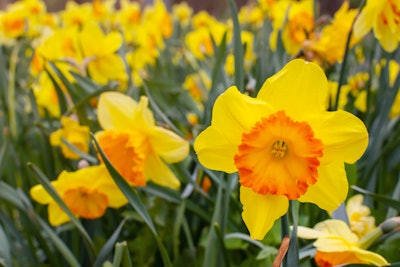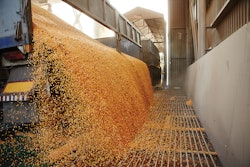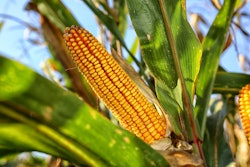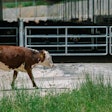
A GBP2.8 million (US$3.6 million) research project in the U.K. could bring a new methane-reducing feed additive to market over the next four years — if it works.
Researchers at Scotland's Rural College (SRUC) have secured funding from the U.K. government and a consortium of commercial partners to lay the research groundwork for using an extract from daffodils, called haemanthamine, to reduce enteric methane emissions from cattle. Early experiments in a laboratory setting suggest the extract could reduce releases of methane by some 90-100%. Results in the real world should be a bit more measured, but gaining a greater understanding of the extract's potential will require feeding trials and on-farm tests — studies the college is set to conduct through 2025, according to Jamie Newbold, provost and deputy principal at Scotland's Rural College.
The idea for the project came to SRUC, which was already investigating the use of plant extracts in animal feed, by way of its commercial backers — companies that produce and process daffodils primarily to extract other chemicals from the plant that can be used in human pharmaceuticals. The companies, Newbold said, had asked SRUC to take a look at some of the byproduct extracts left over from the production process, and this evaluation led researchers to identify haemanthamine as a potentially potent methane inhibitor.
With products such as asparagopsis and 3-NOP already coming to market, haemanthamine could fill an interesting niche in a budding feed additive category by offering U.K. producers a more natural, locally produced option for reducing methane emissions, Newbold said. Asparagopsis, he noted, doesn't grow in the U.K., and 3-NOP is a synthetic chemical. Daffodils are already produced extensively within the U.K., and because haemanthamine is a byproduct of daffodils grown and processed for pharmaceuticals, he believes the cost of a haemanthamine feed additive would come in at or below the cost of other options.
Haemanthamine also appears to inhibit protein degradation, which means it could reduce the need for supplementary protein in cattle diets, Newbold said. But to prove out any of these ideas will require several years of additional research to prove the extract is safe and effective in actual cattle.
“Nobody farms test tubes,” Newbold said.
The first feeding trials at SRUC are set to commence by the end of this year, he said, with safety trials set to run concurrently next year. On-farm tests should begin in 2024 or early 2025 and, if the tests go well, they should provide the college's commercial partners with the data they need to commercialize the extract by 2025 or 2026, Newbold said.
That, he said, is the most exciting aspect of the project — SRUC has been able to assemble enough funding to take the extract through a comprehensive scientific vetting process, rather than having to complete its research in a piecemeal fashion.
“Who knows if it will work, but this project has the structure that should get it all the way to market,” Newbold said.
Meanwhile, he warned that cattle producers should not attempt to feed raw daffodils to their cattle. The flowers themselves are toxic to animals.














